Continued from 95bFM: the 90s part 1
--
The programme director on any radio station plays a vital role, managing the station’s playlist and a whole lot more. They act as content curator and gate keeper, mentor, they (along with management) hire and fire hosts, and generally set the overall vibe.
In the New Zealand of the 1980s and 90s commercial station programme directors actively refrained from playing much local music in their quest to chase the advertising dollar. Local content was less than 2% of what was played on commercial radio in 1995. At that time, bFM was committed to playing 30-50%.
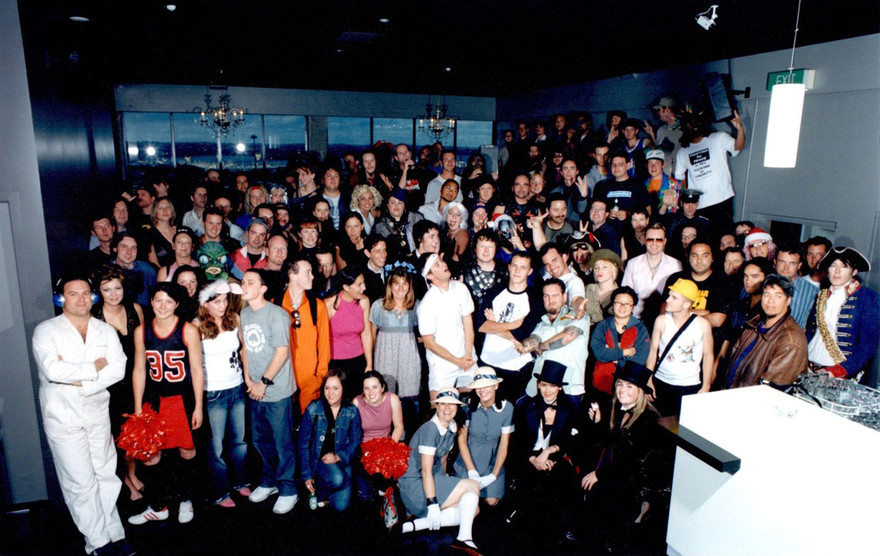
Hosts, staff, volunteers and friends at a bFM Christmas party at the 4:20 bar in the old Rising Sun building, K Rd Auckland.
In 1990 the NZ Music Quota Bill was introduced to Parliament by Labour’s Graham Kelly, but a change of Government nobbled it before it progressed. Then in March 2002 the Government and Radio Broadcasters Association launched the Code of Practice for New Zealand Music Content, setting a target of 20% local content for all stations by 2006.
This was achieved by 2005, but the commercial radio door remained only slightly ajar for most local artists. There were a lot of repeat plays of Split Enz, Crowded House, DD Smash, Hello Sailor and Dragon, along with well-worn songs such as The Narcs’ ‘Diamonds on China’, Dance Exponents’ ‘Victoria’, Peking Man’s ‘Room That Echoes’, The Mockers’ ‘Forever Tuesday Morning’ and Netherworld Dancing Toys’ ‘For Today’ behind that statistic.
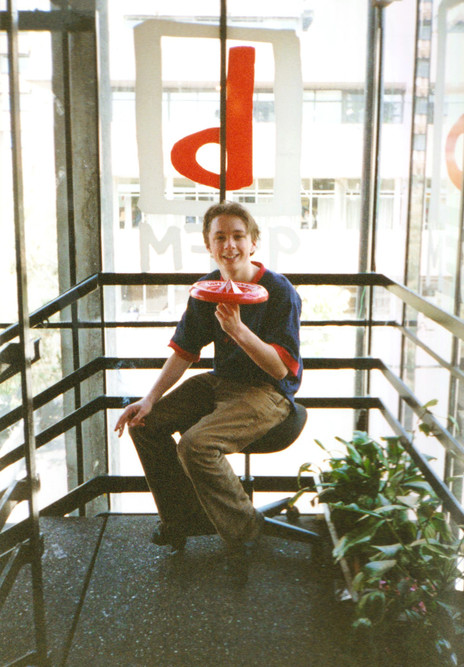
bFM host Nick Dwyer. - Photo by Graeme Hill
Over at 95bFM a revolving roster of programme directors continued to take up the slack for both local music and a wide palette of international music. Graeme Hill came and went from the role until Bill Kerton took over from 1994 to 1999. Warren Thomas was in the role from mid 1999 to the end of 2000 and was followed by Patrick Waller (Dubhead). Later, Jason Rockpig took the helm.
“Graeme Hill was an excellent programme director,” says former station manager Harriet Crampton. “He had an egoless vision for the brand and whatever would work he made famous. Marcus Lush, Mikey Havoc, Jennifer Weathercentre, Joel Tobeck, Freak the Sheep, The Wire, Russell Brown, Roy the Lawyer, those shows and people all flourished under Graeme. He was hugely intelligent, a polymath, and he empowered them. It wasn’t a hard norm to stretch. People at ‘b’ absolutely despised commercial radio and as we had a mandate to be different, we took it.”
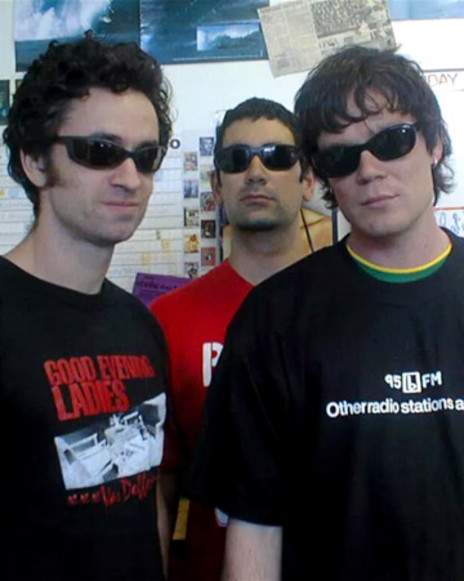
Bill Kerton, Bob Kerrigan, Joel Tobeck.
“We just had to be a bit more commercially minded while not chasing away the maverick spirit that made the place so special,” says Bill Kerton. “As good as it was, I just thought it was a bit unpolished and applied some of my commercial background to tighten things up when I took over. For example, there was a lovely guy who insisted on starting his lunchtime show with 10 minutes of Tibetan bell music. That had to go. I applied more structure to the playlist, formalising the tunes I wanted, how often, where and when. I struck an informal deal with the DJs: they would have 50% personal choice and the playlist would be constructed with their input. It worked well and as we gained listeners they were more likely to play by the rules. My mantra was programming the DJs as much as the music.
“But programming bFM in the mid-90s was also like taking candy from a baby because many popular artists – local and international – were still routinely ignored by the big stations. Most of us were actively playing live music or going to shows, so we would see things first-hand and act accordingly. Shihad, Beastie Boys, Chemical Brothers, Smashing Pumpkins, Soundgarden, Foo Fighters, Tool, all of those and so many more were ‘ours’ for several years. We couldn’t lose. Even artists like Bic Runga that had such obvious commercial potential were ‘broken’ by us.”
Kerton has lots of good stories about how bFM was seen as a tastemaker and testing ground by record companies. When Dave Grohl completed the first Foo Fighters album he made 20 cassette tapes and asked his record company to send them to the most influential radio station in each territory. One of these turned up on Kerton’s desk. He and the team listened, deduced what the singles would be, “and played the hell out of them for several months before the album was released”.
He remembers throwing that cassette away. “I know that sounds ridiculous now, but at the time there was so much stuff coming in, it was like an embarrassment of riches and I gave most of it away to friends.”
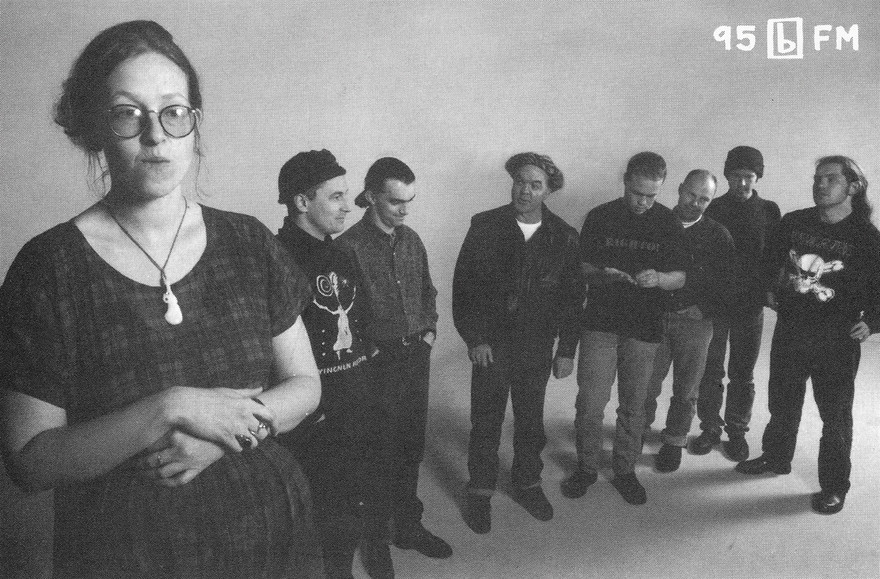
95bFM staff postcard with Harriet Crampton at left. - Simon Coffey Collection
On another occasion Paul Masters from Virgin Records came in with Smashing Pumpkins’ new single, ‘Set the Ray to Jerry’. It was two weeks before its release anywhere in the world. “He just said ‘There you go’. Things like that were happening on a daily basis. Another time we got a new Chemical Brothers remix and were told we were the only people to have heard it apart from them and the record company.”
The combined vision and taste of the programme directors and the rest of bFM’s team enabled the station to hit the cultural jugular, and audience numbers just kept on growing.
The family of five
Aaron Carson started at bFM in 1998 as the junior advertising sales rep and became the station’s leading salesman. He was subsequently promoted to sales and marketing manager, responsible for developing and managing key accounts. Then someone suggested he try working in an ad agency, so he did and hated it. Luckily (for him and bFM) he was shoulder tapped to return as station manager, a role he held from 2001 until 2005.
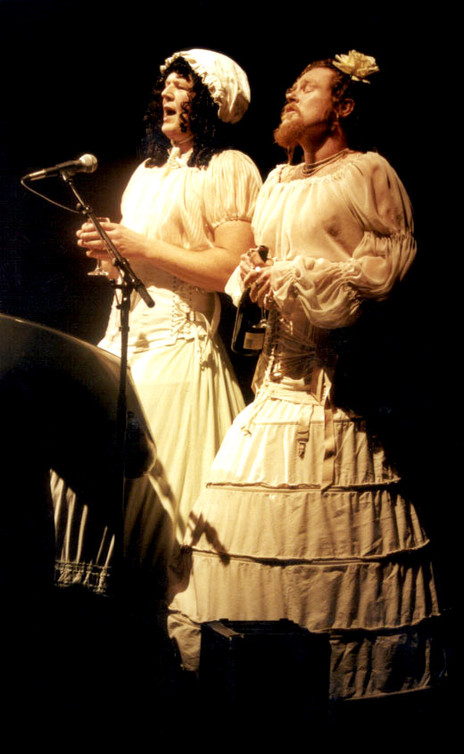
Aaron "Captain" Carson and Glenn "The Professor" Prosser hosting the at bNet Awards. - Aaron Carson Collection
Carson developed a bold plan that filled the coffers, retained the station’s integrity and fuelled its momentum. It almost seems counterintuitive that attracting big name advertisers to an alternative student radio station would increase its cultural kudos. But bFM’s blossoming success and pursuit by appropriate big name brands made listeners and supporters proud and helped attract many thousands more.
This strategy was called “The Family of Five” and promoted to ad agencies and their clients. The plan was naively simple. Get five really big, well-known brands and don’t let them use their own ads – that is, insist that bFM retain creative control and use its own people to make them, ensuring they were “on bFM brand”, not the client’s. That’s quite an ask from a small radio station.
A note on bFM’s approach to making ads: advertising makes up six to seven minutes of highly valuable on airtime each hour. bFM has always used its unique advertising as a true differentiator and had a team of talented young creatives in-house, writing and producing.
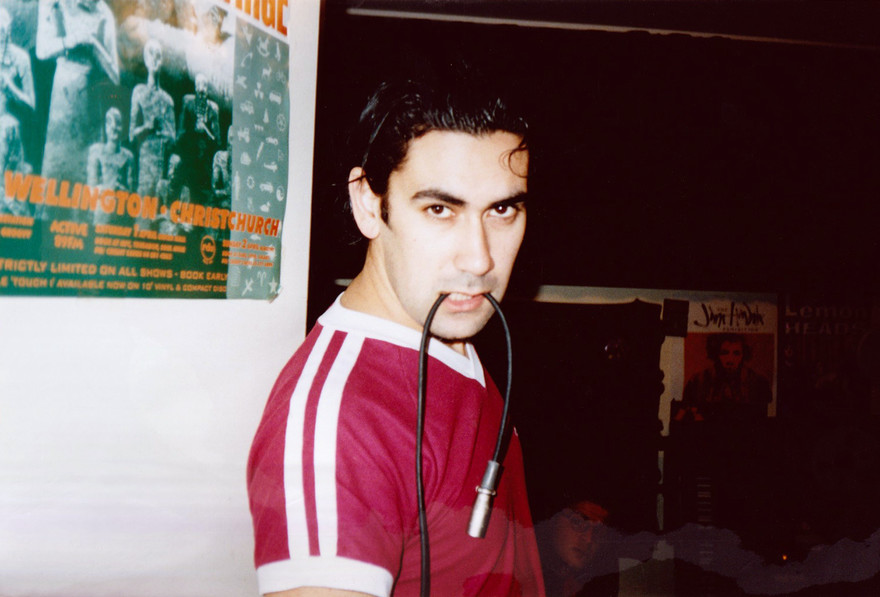
Bob Kerrigan. - Photo by Graeme Hill
Long term sales manager Pat Fife did the hard yards with his team selling this approach in the early to mid 90s. Later, Bob Kerrigan and Scott Kelly grew quite a reputation in the ad sector with their colourful work. In 2000 they were snapped up to work for ad agency Whybin TBWA.
“Instead of being a necessary evil, the ads were an essential part of the sound,” says Harriet Crampton. “Clients had to accept that if they wanted to advertise on that hugely influential platform they had to take ads which suited the station. I don’t understand why commercially based platforms never learnt that. The audience didn’t tune them out like they do on commercial stations, they enjoyed and bought into them. They felt respected and understood. We were approached by Karen Walker, Phoenix and SPQR from their earliest beginnings, who specifically wanted their brands on b because they understood the power of reaching a psychographic which would actively engage with the station’s advertising.”
Building on this approach the “Family of Five” pitch offered more to clients than getting jingles on air, edgy or not. It focused on “the quality of the listener not just the numbers, and we weren’t just offering access to 20-year-olds anymore,” says Carson. These household names could become part of what bFM was doing. It was about offering a deeper kind of partnership, and “letting them have a little slice of the station”.
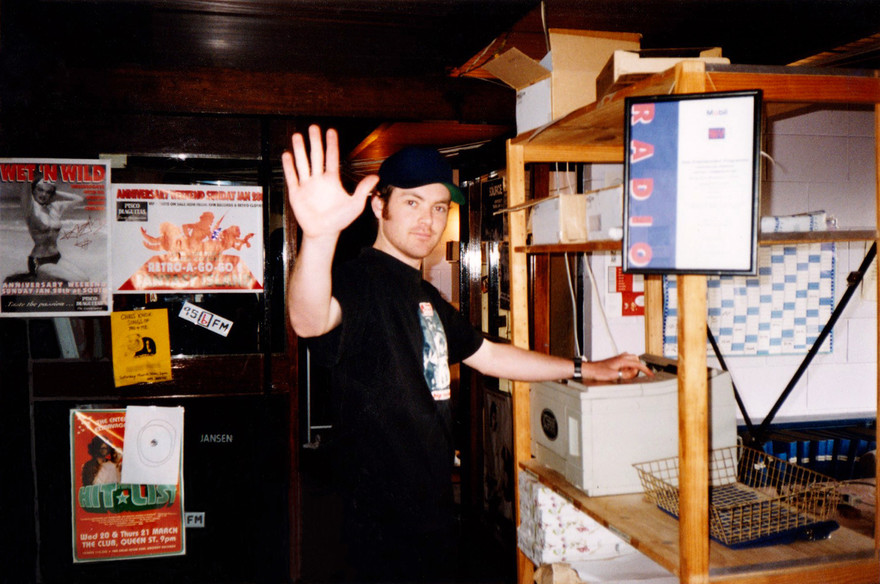
Jubt Avery. - Photo by Graeme Hill
The Family of Five sponsors had naming rights on the most popular shows. Hosts would align with them, talking in an authentic, supportive way because they were actually liked by them and the listeners, and in many cases part of their daily lives. The sponsors were offered first option on co-branding packages for hip, well publicised events. Essentially, giving them the opportunity to be part of the bFM culture and providing a direct line into the hearts and minds of its growing Auckland audience.
Aaron Carson: “b’s brand always needs to be in touch with what’s happening on the street but it can’t survive on advertising from small retail. Meanwhile, large brands and their agencies want to spend their money with platforms that reach large numbers of the ‘right’ people. If our brand doesn’t sell out, then our audience believes in it. Likewise, they’d smell a rat immediately.”
Since the advent of TV, radio has always been the most difficult advertising medium to sell because it’s more intangible – floating around in the air. That sell gets even harder when you don’t have the audience numbers of the big players. But when you attract 10,000 people to Albert Park two Sundays in a row for free bFM gigs, you know you’re truly connecting with the local culture.
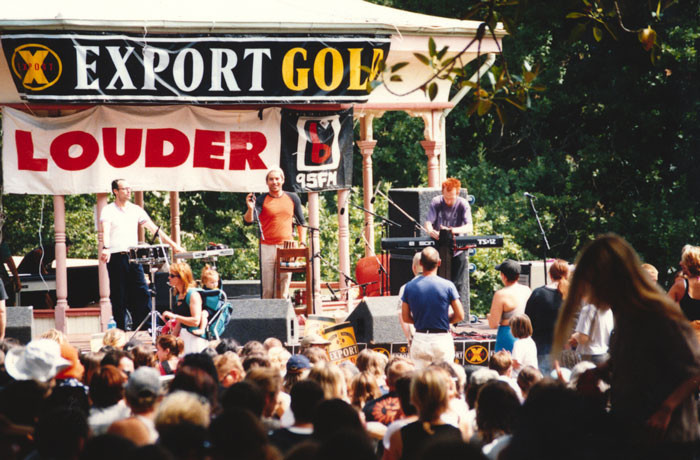
Mesh at bFM's 1994 Summer Series in Albert Park.
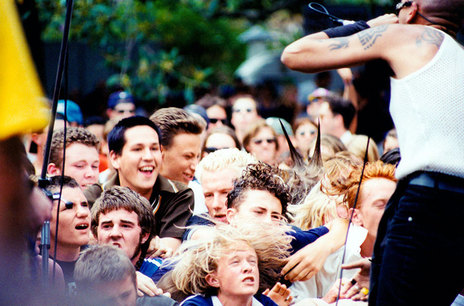
The crowd in Albert Park, bFM Summer Series, 1995, watching Hallelujah Picassos. - Photo by Mark Walters. Peter McLennan collection
So off Carson went, securing and then managing the Family of Five relationships, including Vodafone (then new to New Zealand), PlayStation and V energy drinks. Meanwhile the fired-up sales team, with Josh Hetherington, Matt Nicholls and Steve Simpson leading the charge, upped the ante with a renewed focus on street level and mid-tier advertisers.
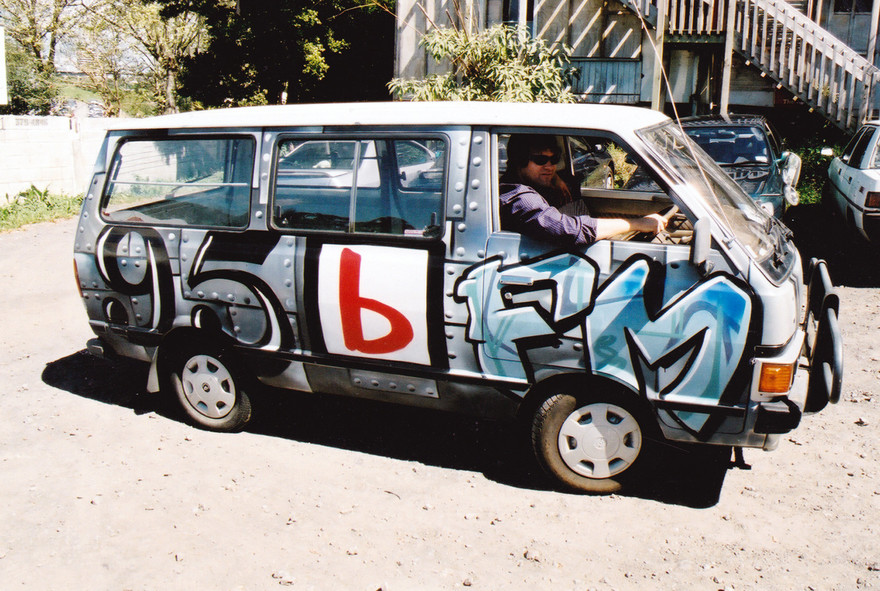
The 95bFM van with Steve Simpson at the wheel. - 95bFM Collection
“The Family of Five strategy made the station profitable to the point of us turning down big advertising dollars from KFC,” says Carson, “while sponsors like Vodafone were transparent with us that b could reach their target audience in a way they couldn’t dream of, and they trusted us to make their ads.”
The events
In addition to the successful bFM Summer Series concerts at Albert Park, and regular gigs at the University’s Shadows Bar, some large scale, high-profile events happened during these years. The station was there when Doug Hood brought the Big Day Out to Aotearoa in 1994 and it continued as the festival’s onsite broadcaster and champion after Campbell Smith took it over until 2014. At its peak crowds of 50,000 descended on Mount Smart, overwhelming roads, buses and the train network. They weren’t all bFM listeners but it seemed like a large proportion were, and most of the local and international bands on stage were on the station’s playlist.
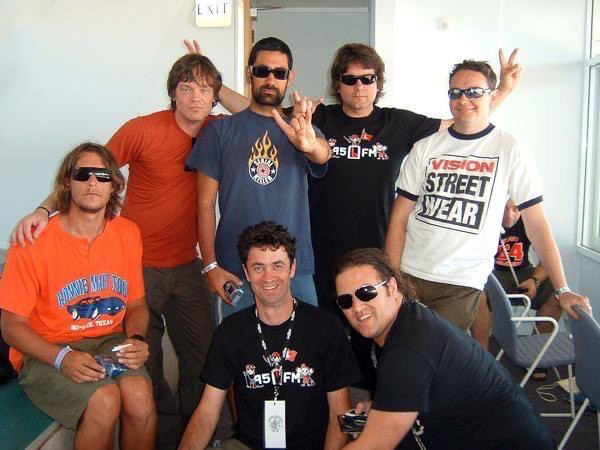
Back row, left to right: Jeremy "Newsboy" Wells (sitting), Joel Tobeck, Bob Kerrigan, Steve Simpson, Scott Kelly. In front are Bill Kerton and Mikey Havoc.
There were big events like Ooonst, reflecting the explosion of the new dance party culture. bFM had introduced this new music to the airwaves before the arrival of George FM. You could literally dance around your kitchen to Nice and Urlich’s house music on Saturday morning, and chill to roots country with Bernie Griffen or Deputy Paul (Paul Taylor) on Sunday night’s Border Radio.
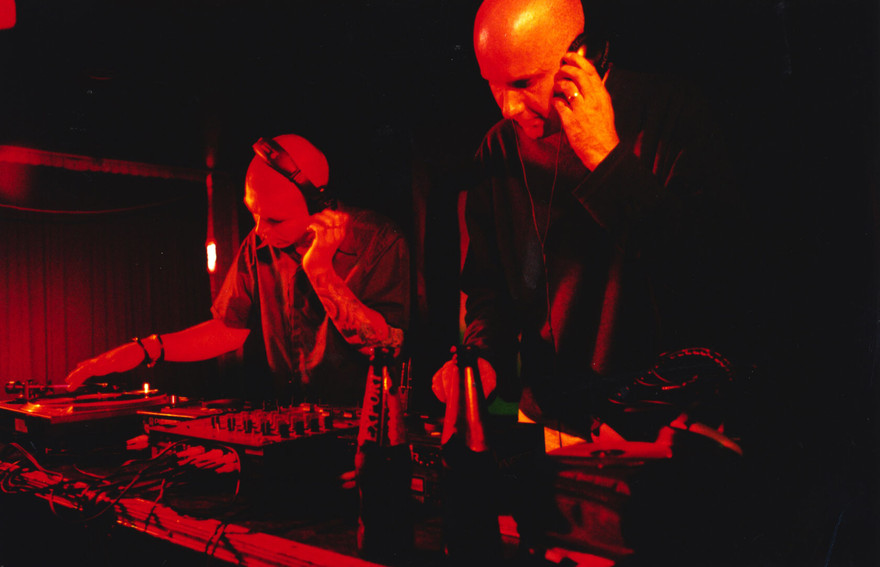
Subware - Jason Rockpig and Joost Langeveld - at bFM Private Function, 29 Nov 1997, Old City Markets.
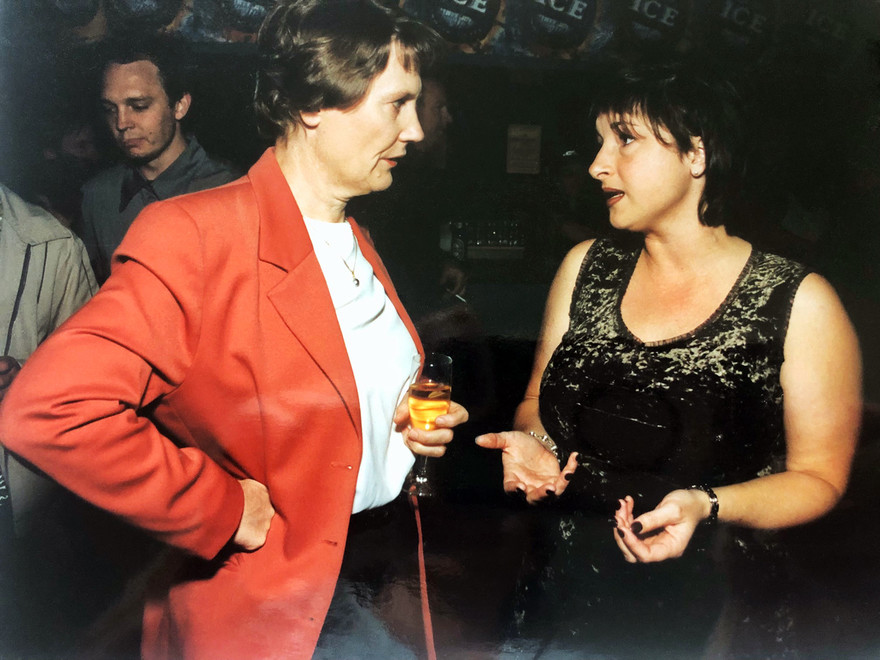
Suzanne McNicol and Helen Clark at bFM 25th Anniversary gig ‘Silverer’ at the Powerstation c June 1999.
There was also the birth of the bNet NZ Music Awards in 1999, which grew out of the 1998 95bFM Music Awards. bFM worked with the other student radio stations to set this up as a national event. The new awards celebrated a wider mix of local artists than the more mainstream RIANZ Music Awards and have remained an important part of the local scene. All the bNet stations nominated finalists and voting was facilitated around the country. In Auckland voters could participate online or by posting completed forms in boxes at Real Groovy – another brand closely associated with bFM. At the 2005 awards Prime Minister Helen Clark presented Shayne Carter with a Lifetime Achievement Award.
Playing the cheeky bCard
Given its self-ordained maverick stance, bFM also had plenty of fun, sometimes running humorous stunts that set mainstream tongues wagging.
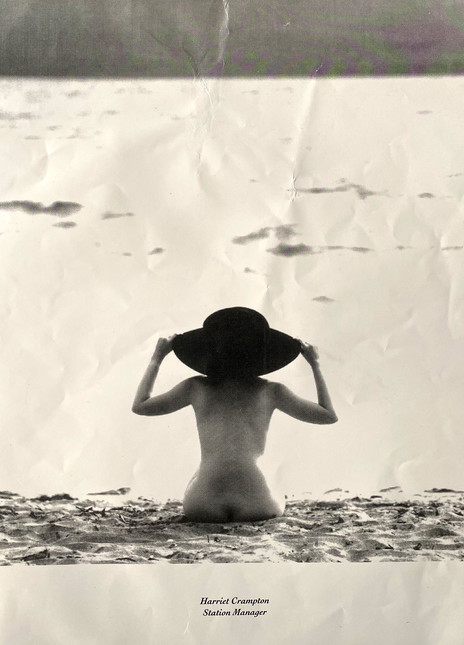
Harriet Crampton in the bFM nude calendar
Harriet Crampton: “I don’t have a lot of pictures from that time but I’ll send you one of me in the bFM nude calendar we did in response to Madonna’s ‘hermetically sealed’ calendar. We had sponsorship from NZ On Air and an agreement to run their logo on printed stuff. When we did the calendar they were surprised to see a picture of Mark Amery’s dick next to their logo. We had to pull the copies that had gone into shops and spend the weekend covering Mark’s dick with stickers. There were 90 calendars already sold – collector’s items for sure.
“When Prince Charles’ tampon phone call with Camilla hit the headlines Graeme [Hill] and I got the transcript and did a mock-up of it. We put it on air and within minutes Hauraki was ringing to ask where we got it. Even though we were on the cheap and cheerful end it always felt like we were one step ahead of the rest.”
Supporting bands and artists
Auckland’s live scene remains absolutely linked to the radio station. Just as it is now, bFM was a vital gateway for bands to listeners, record/CD buyers and for promoting gigs back then. It also afforded credibility by association. Getting a bFM live to air spot or an interview on Breakfast, Drive, Charlotte Ryan’s Morning Glory show or Freak the Sheep were gold dust for up and coming bands. Let alone making the weekly listener-voted bFM Top Ten. Record companies understood its influence too.
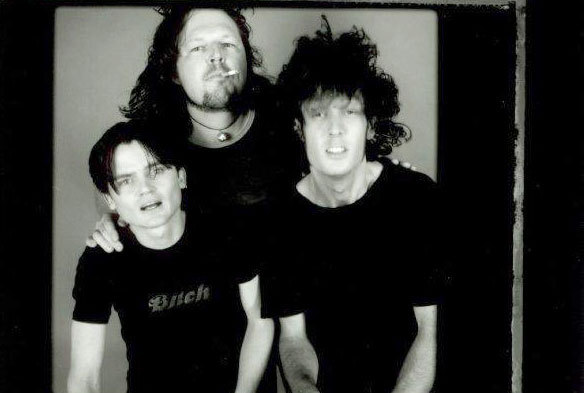
Thorazine Shuffle as a trio - Jules Barnett, Aaron Carson and Josh Hetherington
There were undoubtedly house favourites, unembarrassedly championed by the station. Garageland, The D4, The Datsuns, Shihad, Head Like A Hole, Delta, Nothing At All! and Thorazine Shuffle among them. It didn’t hurt Thorazine Shuffle that its members included bFM’s sales manager Josh Hetherington, studio production manager Jules Barnett, and Aaron Carson.
The station was also right behind local hip hop, championing the likes of Che Fu, King Kapisi and later artists such as Savage.
Countless other bands found support too: The Hasselhoff Experiment, Pumpkinhead, Hallelujah Picassos, Dead Flowers, Mary, The Rock and Roll Machine, The Mint Chicks, Goldenhorse. Even lesser-known outfits could get a live to air on Havoc and an interview on Morning Glory to celebrate a new release.
And of course there were all the Flying Nun bands. Without bFM, many if not most of these artists wouldn’t have had access to their audience through radio.
Getting older
Today it’s accepted that listeners range from seven to 77, and probably older. The concern is that the guaranteed and ongoing bulge of each year’s intake of 18 to 20-year-old students has reduced dramatically with the changes that have occurred, and the average age of listeners must be continuing to rise. But regardless of age, bFM continues catering to a big audience of devoted New Zealand and alternative music fans, there for people who value independent broadcasting with a good dose of spirit.
The talented people in this story have had successful and, in some cases, high-profile broadcasting careers. The most obvious being Graeme Hill, Marcus Lush, Jeremy Wells, Mikey Havoc, Wallace Chapman, Noelle McCarthy and Charlotte Ryan.
After directing Havoc on TV, Bill Kerton later voiced shows like Police Ten 7 and recently made a documentary on Billy Corgan of Smashing Pumpkins for an LA-based network. Harriet Crampton is “Head of Scripted” at Greenstone TV. Gemma Gracewood became a film and TV producer, and the editor-in-chief of film website Letterboxd. Aaron Carson is having a colourful career and along with his wife Fran (drummer for Auckland band Mary back in the day) has developed and run some of Auckland’s top eateries and bars.
That is part of the bFM story too. It remains a training ground for people who want to make things happen. Music is at its core, but it’s much more than that. This and the “cultural heart thing” came up again and again in conversations for this story.
Graeme Hill: “Culturally, bFM has been hugely significant in nudging edges closer to the mainstream and then finding new edges. Just like when in 1977 if you dug Talking Heads you were a fucking WEIRDO, and Toy Love in 1979 were an outrage, and now look. World beaters and a Vogel’s bread ad – good on Chris Knox. It’s not just music though. Fresh broadcasting styles were forged. Comedic genres. Misbehaviour, and all that jazz.”
Rick Huntington: “It’s so important as a cultural centre that ties together such a wide group of people and age ranges. It’s amazing at continuing to bring in new music and artists ... it’s hard to define just how important it is at galvanising things, it’s the wider arts and current affairs too ... there are bFM people everywhere in those fields across the country.”
“The idea of a New Zealand station not playing local music seems farcical now, doesn’t it?” – Harriet Crampton
Harriet Crampton: “The station led the cultural scene in Tāmaki at that time. It was staffed by volunteers, most of who were exceptionally talented and on the ball in terms of what was happening in the city. Everything new seemed to come through our doors, via interviews, playlists, even sales. Every band in town came on air, no matter how huge. There’s always a caché attached to having worked for b. I was hugely inexperienced and I didn’t have the same handle on the station’s culture that someone like Graeme did, but it was massively fun. The idea of a New Zealand station not playing local music seems farcical nowadays, doesn’t it?”
Suzanne McNicol: “It’s absolutely vital, a hub of discovery where people can celebrate being different to the mainstream and while it’s about music it’s also much more, it’s a way of thinking. But in terms of music it’s where so many great bands get discovered off rough demos and can build an audience they couldn’t anywhere else.”
Bill Kerton: “Unknowingly, we were all in the right place at the right time during a massive and enduring flowering of indie culture.”
Aaron Carson: “The station should always be about celebrating diversity, opportunity and championing the new. Offering an alternative to the mainstream. It’s not for everyone but it’s incredibly important to the culture of a city across generations for something like bFM to exist. Uniting and activating the community, that’s bFM’s real strength. Plus, I loved the fact that you could have an idea at midnight, be at work by six, and whatever it was you’d dreamed up could be on air by 6pm. And thinking about it now, while people have gone onto bigger, better paid jobs I’d speak for most of us when I say working at b was the best, most fun job we ever had. It really meant something important and every day was crazily different.”
--